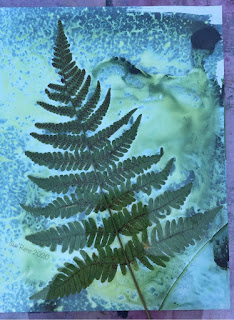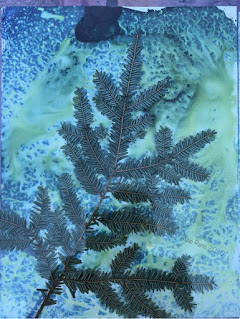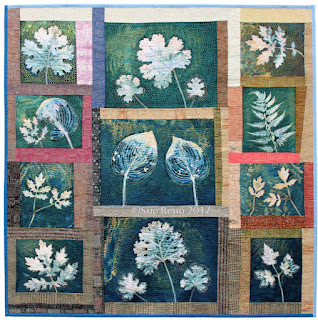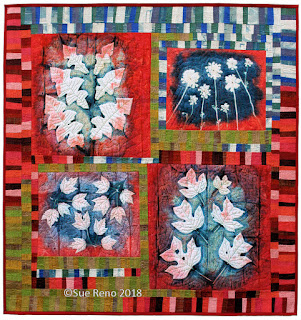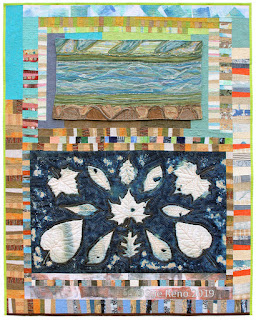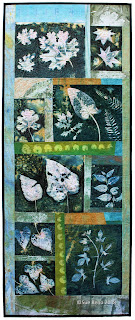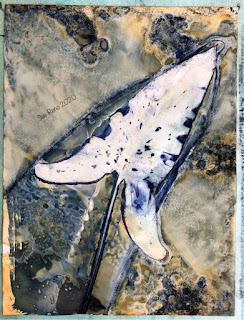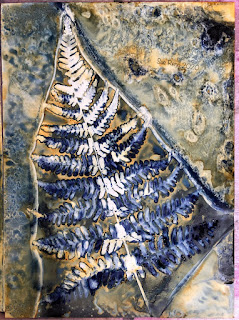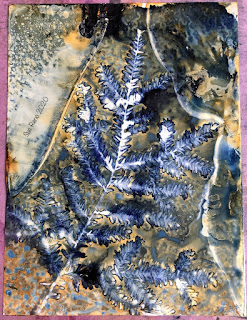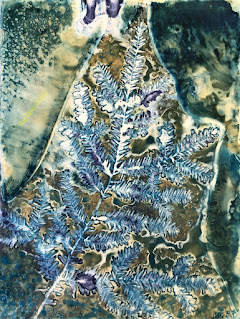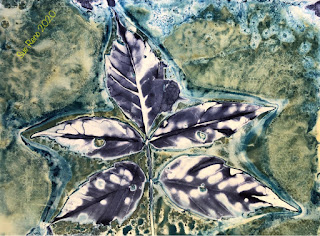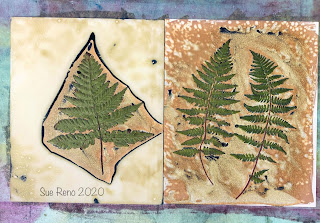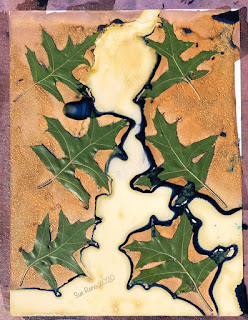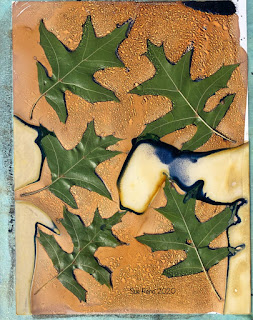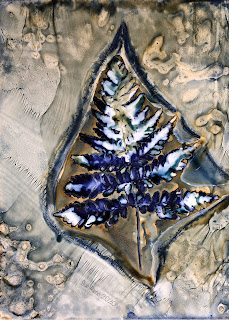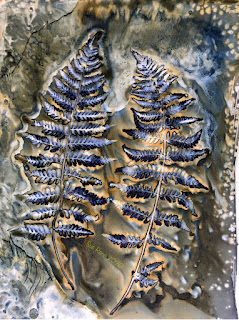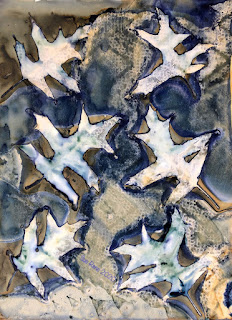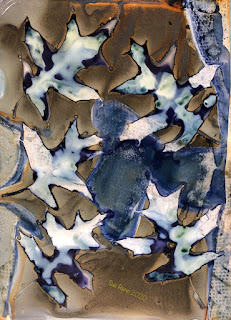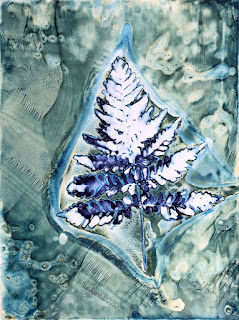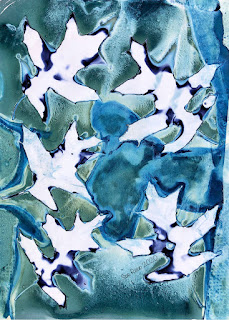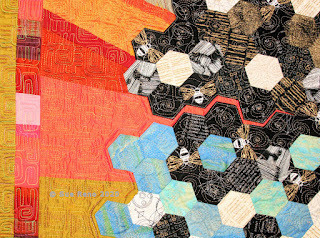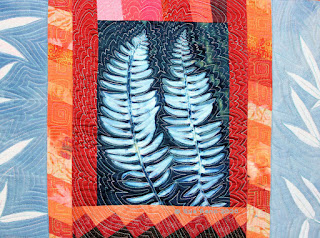I began by working on cotton, added in various types of silk, experimented with ways to change the Ph, and tried adding other textile paints and Solarfast dyes. This week I'm trying printing on mineral paper.
I made prints in the high heat of summer, and in the depths of winter where they were frozen and snowed upon. The ratio of beautiful prints to duds has been very high, and even the duds can be cut up and used in patchwork. This process can never truly be mastered, because there are just too many variables, but along the way I've developed some working methods that lead to pretty consistent results. I've shared all of this, in great detail, here on my blog. You can view all of the experiments, in reverse chonological order, by clicking on the Wet Cyanotype tab in the top header, or clicking here.
I've used the prints in my art quilts, beginning with Storm Watch: Heat Index:
Back to the mineral paper--this is the second batch of prints, the first 4 photos are the prints as I set them out, this set of four is the prints after exposure and before rinsing.
They are a calla leaf, a fern, a bit of hemlock foliage, and a twig of box elder leaves.
The way the chemicals move around on the slick mineral paper is completely unlike how they respond to fabric, and I am having fun fooling around with the process. It's also freeing in that I don't need to plan ahead for where the stitching lines will go, as each print is complete in and of itself.
Here are the finished prints, all 10" x 12".

Twitter feed: http://twitter.com/suereno
Tumblr: http://suerenostudio.tumblr.com
Instagram: https://www.instagram.com/sue_reno_studio/

